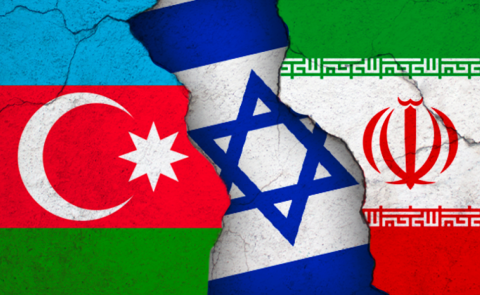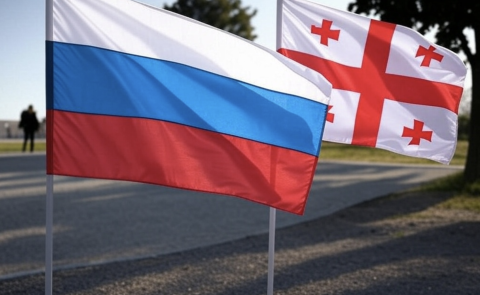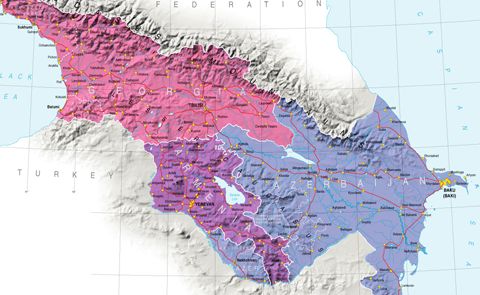
Economic Cooperation Between Armenia and Georgia: Potential and Challenges Ahead

The article analyzes Armenia's and Georgia’s leading economic and political relations, focusing on trade, foreign direct investment (FDI), and energy cooperation. It emphasizes that the relationship is mutually beneficial, but challenges arise from the two countries’ differing foreign policy directions. Georgia remains an essential partner for Armenia because of its location, especially as a transit country for energy supplies.
Background
Developing foreign economic relations plays a pivotal role in stabilizing Armenia’s economy. The country’s unfavorable geographical position, limited natural resources, and inconsistent foreign economic policy highlight the crucial role of external development factors. This underscores the urgency and significance of Armenia's economic cooperation with neighboring countries as an alternative path to progress, with long-term, mutually beneficial economic ties with Georgia being critical. Thus, in terms of enhancing regional economic relations, Georgia remains Armenia’s most promising and reliable partner. No significant differences between Armenia and Georgia could threaten peaceful coexistence. Moreover, the two states share deep economic cooperation, a long-standing friendship, and a history of rebuilding their national economies.
Armenia and Georgia: Expanding Horizons in Trade Relations
In 2023, Georgia was Armenia's 7th export partner and 16th largest import partner, with shares of 1,6% and 1,01 %, respectively. Over most years, Armenia's imports from and exports to Georgia have grown steadily. However, there was a sharp slowdown from 2018 to 2020. In 2018, exports dropped by 54.7%, and imports fell by 20.1% compared to the previous year. This decline continued over the next two years but at a slower rate. In 2021, trade volumes rebounded, with imports rising by 67.6%. Between 2013 and 2023, Armenia’s trade with Georgia doubled (Figure 1).

Figure 1. Armenia’s export, import, and trade balance with Georgia in 2013-2023 (in 1000 USD)
Source: www.trademap.org
As for the product structure of the Armenia-Georgia trade, “Tobacco and manufactured tobacco substitutes” dominate Armenian exports to Georgia, with a share of 2.35%. Other major export categories include “Glass and glassware” (1.3%) and “Mineral fuels” (0.95% share). Meanwhile, “Beverages, spirits, and vinegar” constitute the most significant import category, with a 2.65% share, indicating strong trade in alcoholic products. Other significant imports include “Residues and waste from food industries” (1.18%) and “Edible fruits and nuts” (1.01%) (Table 1). The export and import structure reveals a complementary trade relationship between the two countries, with Armenia exporting more industrial and manufactured goods. In contrast, Georgia exports more food, beverages, and raw materials. The export and import portfolios show good diversification, reflecting a well-rounded trade relationship between the two countries.

Table 1. The product structure of imports and exports of Armenia-Georgia trade in 2023 (in 1000 USD)
Source: www.trademap.org
Foreign Direct Investments: Strengthening Armenia-Georgia Ties
Although some investments flow annually between Armenia and Georgia, the countries are not major investors in each other. They are developing nations with limited capital in the global investment market. However, over the past ten years, Georgia has attracted more foreign direct investment than Armenia, and this gap has remained prominent in most years (Figure 2).

Figure 2. FDI inflows in Armenia and Georgia in 2013-2923 (mln USD)
Source: https://unctad.org/publication/world-investment-report-2024
Foreign direct investment in both countries has not followed a stable trend since 2013 due to global and regional economic conditions. Both nations saw a sharp decline in 2020, likely due to the CCaucCOVID-19 pandemic. Georgia’s FDI fell by 56 %, while Armenia’s dropped by 41 %. After hitting a low in 2020, FDI in Georgia doubled; in Armenia, it increased sixfold in 2021. In 2022, FDI peaked in both countries. Armenia’s peak relates to regional developments, particularly Russia’s military operation in Ukraine, which prompted a large influx of labor and business relocations from Russia to Armenia.
In 2022, the United Kingdom was the largest investor in Georgia, with a 20,8% share, followed by Spain (17,2%) and the Netherlands (9,4%). For Armenia, the largest net flows of FDI came from Switzerland (31,1%), Russia (23,6%), and the British Virgin Islands (21,5%). The three largest sectors absorbing investment in Georgia were the financial sector (25,6%), real estate (17,5%), and the water supply sector (9,4%). In Armenia, the top sectors were financial services (58,6%), electricity and gas (11,7%), and mining in metal ore (10,5%).
FDI net flows from Armenia to Georgia during 2019-2022 were primarily negative, meaning more FDI left Armenia for Georgia than flowed into Armenia from Georgia. The only exception was in 2022 when inflows of FDI exceeded outflows by 1.33 billion drams. FDI from Armenia to Georgia peaked during the COVID-19 crisis. They reached their peak in the year of the COVID-19 crisis, reaching $19 million, but decreased to $13 million by 2022[1].
Georgia's stable FDI inflows suggest a more attractive investment environment, while Armenia’s sharp fluctuation indicates its small market size and greater vulnerability to external shocks.
Cooperation in the Energy Sector
Energy cooperation between Armenia and Georgia has significant development potential and is important in deepening the two countries' economic and political relations. It encompasses both the electricity and gas sectors.
Three power transmission lines connect Armenia and Georgia, ensuring the interconnection of their electricity grids. This cooperation allows for electricity exchanges during emergencies. With the support of the European Union, a new high-voltage power transmission line is under construction, facilitating mutual assistance and electricity exports to third countries, such as Iran.
In 2022, Armenia’s energy exports to Georgia surged, with Armenia exporting 365 million kilowatt hours of electricity, compared with no more than 242 million kilowatt hours annually between 2012 and 2021. Georgia’s exports to Armenia totaled 101.2 million kilowatt hours, making Armenia the third-largest consumer of Georgian energy.
In the gas sector, cooperation primarily centers on gas supplies to Armenia. The bulk of Armenia’s gas is delivered from Russia through Georgia, which underscores Georgia’s importance as a transit country, particularly for Armenia’s energy security.
Energy cooperation between Armenia and Georgia is part of a broader regional energy policy in which Iran and Russia participate through the North-South energy corridor. There is considerable potential for cooperation in integrating energy markets and developing alternative energy sources, mainly hydropower and solar energy.
Conclusive Remarks
While nothing appears to hinder Armenia and Georgia's joint efforts to develop mutually beneficial socio-economic cooperation on a bilateral basis, this cooperation has not yet reached the desired level. The main obstacle is the two countries' differing foreign policy orientations. Among South Caucasus nations, Georgia is currently focused on deepening relations with the European Union. At the same time, Armenia remains a member of the Eurasian Economic Union despite recent steps toward strengthening EU ties.
Experts closely watch the significance of Georgia's parliamentary elections, scheduled for October 26, 2024. Analysts note that the leadership of the Georgian Dream Party could substantially shift Georgia's global political orientation, signaling a move away from its Western allies. Given Georgia's role as a vital land and sea route connecting Armenia with both EU and EAEU countries, such a shift could also impact Armenia's geopolitical direction.
Armenia's economic relations with Georgia are crucial for stability and development, but the full potential of this cooperation remains untapped. Future progress will depend on deepening trade and investment ties and aligning geopolitical interests.
Author: Diana R. Galoyan, Ph.D.,
Chief Research Officer: Verej Isanians, Ph.D., Nexus Intellect Research NGO
[1] Note: The FDI statistics are presented by the national statistical services of Armenia and Georgia with certain differences. First, Armenia presents the data of the net FDI inflow only in AMD, while Georgia presents the FDI inflow in USD.
See Also


From Neorealism to Neoliberalism: Armenia’s Strategic Pivot in Foreign Policy After the Nagorno-Karabakh Conflict

Georgia and Russia: New Turn in Bilateral Relations

3+3 Initiative as a New Order in the South Caucasus

Russia and Occupied Abkhazia: A New Type of Relations

